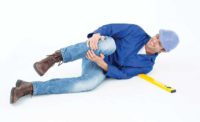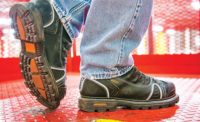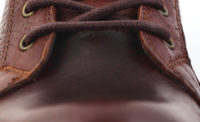
Particulate respirators help reduce the wearer’s exposure to airborne contaminants. They come in various sizes and must fit tightly to the wearer’s face. NIOSH (National Institute for Occupational Safety and Health)-approved particulate respirators are engineered and tested to meet very specific, stringent government standards. This article provides an overview of NIOSH-approved particulate respirators and answers some commonly asked questions regarding respiratory protection.
NIOSH-approved filters
NIOSH approves (under 42 CFR Part 84) nine different classes of particulate filters. There are three levels of filter efficiency: 95, 99 and 100 (99.97) %, based upon filtering particles down to a 0.3 micron particle size. The efficiency rating means that a filter rated“95” will remove 95% of all airborne particulates down to 0.3 microns.
In addition to filtering efficiency, NIOSH also tests and approves filters based upon compatibility with oil aerosols. There are three series designations: N-series (“not” for oil aerosols), R-series (oil “resistant”) and P-series (oil “proof”).
- N-series filters are restricted to use in atmospheres free of oil aerosols and may be used for any solid or liquid airborne particulate that does not contain oil. Generally, these filters should be used and reused subject only to considerations of hygiene, damage and increased breathing resistance.
- R-series filters are intended for removal of any particulate including oil-based liquid aerosol and may be used for any solid or liquid airborne particulate hazard. If the atmosphere contains oil, the R-Series filter should be used only for a single shift (or for eight hours of continuous or intermittent use).
- P-series filters are intended for removal of any particle including oil-based liquid aerosols and may be used for any solid or liquid airborne particulate hazard. NIOSH requires that respirator manufacturers establish time-use limitations for all P-series filters.
When the three classes of efficiency are combined with the three series designations, we get the nine different approval classes NIOSH has established for particulate respirators: N95, R95, P95, N99, R99, P99, N100, R100 and P100. Manufacturers are required to stamp the approval class on all NIOSH-approved particulate filters.
Test your knowledge
- What is a fit test? Fit tests use a protocol in 29 CFR 1910.134 Appendix A to evaluate a respirator’s fit. A qualitative fit test (QLFT) is a pass/fail test relying on a subjective response (taste, irritation or smell) to a testing agent. A quantitative fit test (QNTF) measures the actual leakage of air into a respirator.
- Are there specific qualifications for the person administering fit tests? There is no special certification required for performing fit tests. However, you must be able to prepare the test solutions, calibrate the equipment, perform the tests properly, recognize invalid tests and ensure that test equipment is in proper working order. The ability to calculate fit factors is also a requirement for administering a QNFT.
- Do filtering facepiece respirators or surgical masks have to be fit tested? If an employer requires respirators, fit testing for negative-pressure, tightfitting respirators - such as filtering facepiece respirators - is mandatory. Surgical masks are not tightfitting masks and cannot be fit tested.
- When do I have to conduct a fit test? Fit testing is required prior to initial use, when a different respirator face piece is used and, at a minimum, every year thereafter. Additional fit tests are required when there are changes in the user’s physical condition (facial scarring, dental changes, cosmetic surgery or an obvious change in body weight) that may affect respirator fit.
-
What is voluntary use? Voluntary use means:
- An exposure assessment has been conducted.
- The permissible exposure limit (PEL) is not exceeded.
- No contaminant-specific OSHA regulation exists requiring employers to provide respirators.
- The employer doesn’t believe it is necessary to reduce exposures below current levels.
- The employer doesn’t require, recommend, encourage or suggest respirators be used.
- Workers ask to wear respirators.
- Respirators will not be used for emergency response or escape.
If one or more of these conditions is not met, a complete respiratory protection program is required to comply with OSHA standards. If all the above conditions are met, a voluntary-use situation exists.
For voluntary uses OSHA distinguishes between disposable filtering masks (such as N95 respirators) and reusable respirators. If an employee voluntarily uses a disposable filtering mask, employers must supply the employee with a copy of Appendix D to 29 CFR 1910.134. For all other respirators used voluntarily, an additional written program that covers medical fitness, maintenance procedures and training elements is required.
Respirators vs. surgical masks
Respirators reduce exposure to airborne contaminants. They come in various sizes and must be selected to fit each wearer properly by fitting tightly to the face. Proper fit allows air to be drawn in through the filter material, not through gaps between the face and respirator. When respirator use is required, the device must be certified by NIOSH and selected in compliance with OSHA’s respiratory standard (29 CFR 1910.134).
Surgical masks are not tested to NIOSH guidelines. Surgical masks serve as a physical barrier to protect against hazards such as splashes or large droplets of body fluids. They can be worn by people with flu-like symptoms to protect the people around them. Surgical masks trap large particles of body fluids that contain bacteria and viruses expelled by the wearer.
Since they don’t seal tightly around the wearer’s face, surgical masks aren’t designed or certified to prevent the inhalation of small airborne contaminants. While airborne contaminants aren’t visible, they may still cause an infection.
Respirator selection requires an assessment of workplace operations, processes or environments. The identity of the hazard and its airborne concentrations should be determined before choosing any respirator. This assessment can be done by experienced safety personnel or by an industrial hygienist.


